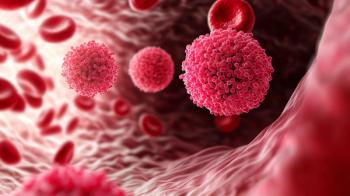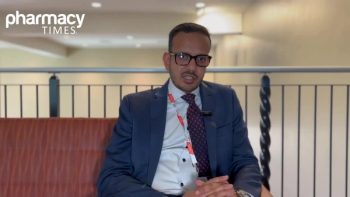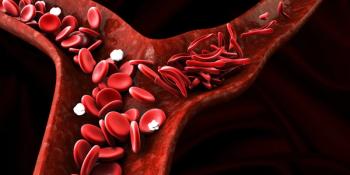
Combination Therapy Improves Pancreatic Cancer Drug Efficacy
Ultrasound and chemotherapy in conjunction with microbubbles enhances pancreatic cancer treatment.
A new approach involving ultrasound and chemotherapy in conjunction with microbubbles to increase the porosity of pancreatic cells, nearly doubled the median survival time in pancreatic cancer patients.
The initial results from a phase 1 clinical trial presented at the Acoustical Society of America’s 171st meeting found that this new approach increased median survival time from 7 to 18 months without an increase in the chemotherapy dosage. No added toxicity or additional side effects were reported from the trial.
“When we compared the amount of treatment our patients were able to undergo, compared to a historical cohort, we saw a significant increase of treatment cycles,” said researcher Spiros Kotopoulis.
Sonoporation is a laboratory ultrasound technique originally used to enhance gene uptake. After Kotopoulis collaborated with a group of French biologists, they made a significant development in forcing single microbubbles into a cell with ultrasound.
This allowed for other compounds to permeate the cell membrane, an issue that has prevented drug efficacy. For the current phase 1 clinical trial, a cohort of 10 volunteers with locally advanced or metastatic pancreatic adenocarcinoma were recruited.
Technology and materials used were already available on the market to have more of a rapid clinical translation.
“If this worked, in 20 years, we didn't want a hospital to have to purchase specialized, expensive, one-use equipment,” Kotopoulis said.
The equipment used included a slightly older clinical diagnostic ultrasound scanner, and the GE Logiq 9 used in combination with a 4C abdominal ultrasound probe. The diagnostic ultrasound scanner allowed researchers to observe and treat the tumors in real time.
A Sulphur hexafluoride-based solution called SonoVue was used to generate the microbubbles, which were injected into the bloodstream in small amounts every 3 and one-half minutes, since they are only stable for a few minutes.
Researchers used the chemotherapy drug called Gemcitabine for their study because, “at the time, this was the best option for extending survival in patients with pancreatic cancer,” Kotopoulis said.
At the start of the procedure, patients received standard chemotherapy according to the existing protocol. When the drug concentration in the blood reached its maximum, the ultrasound scanner was used to induce sonoporation for 31.5 minutes at 3.5 minute intervals.
Although the mechanism of action of the microbubbles permeability is unclear, researchers believed it to be 1 of 2 methods.
High acoustic pressures cause the microbubbles to undergo inertial cavitation, an implosion that creates tiny pores in the cell. The effect includes shockwaves and may be able to penetrate deeper into the tissue, but because of the potential violent ripple effects it’s generally avoided.
During low to moderate acoustic pressures, the microbubbles interact with cells by bouncing and rolling against them to push and pull the membrane; occasionally entering the cell.
Participants treated with sonoporation were able to undergo 14 (±6) cycles of treatment, versus 8 (±6) with normal chemotherapy. This caused the tumors to stabilize or decrease in volume in 50% of patients, while also increasing the median survival time.
According to researchers, future studies will involve a larger scale phase 1/2 clinical trial with international collaborators. Additionally, researchers will work to develop a microbubble compound optimized for targeted drug delivery at low acoustic intensities. Mouse models and bioreactors will also be used to help fully understand the mechanisms of sonoporation.
Newsletter
Stay informed on drug updates, treatment guidelines, and pharmacy practice trends—subscribe to Pharmacy Times for weekly clinical insights.



















































































































































































































